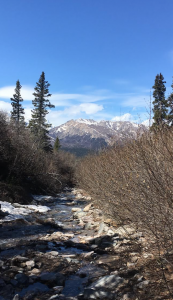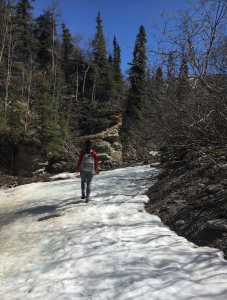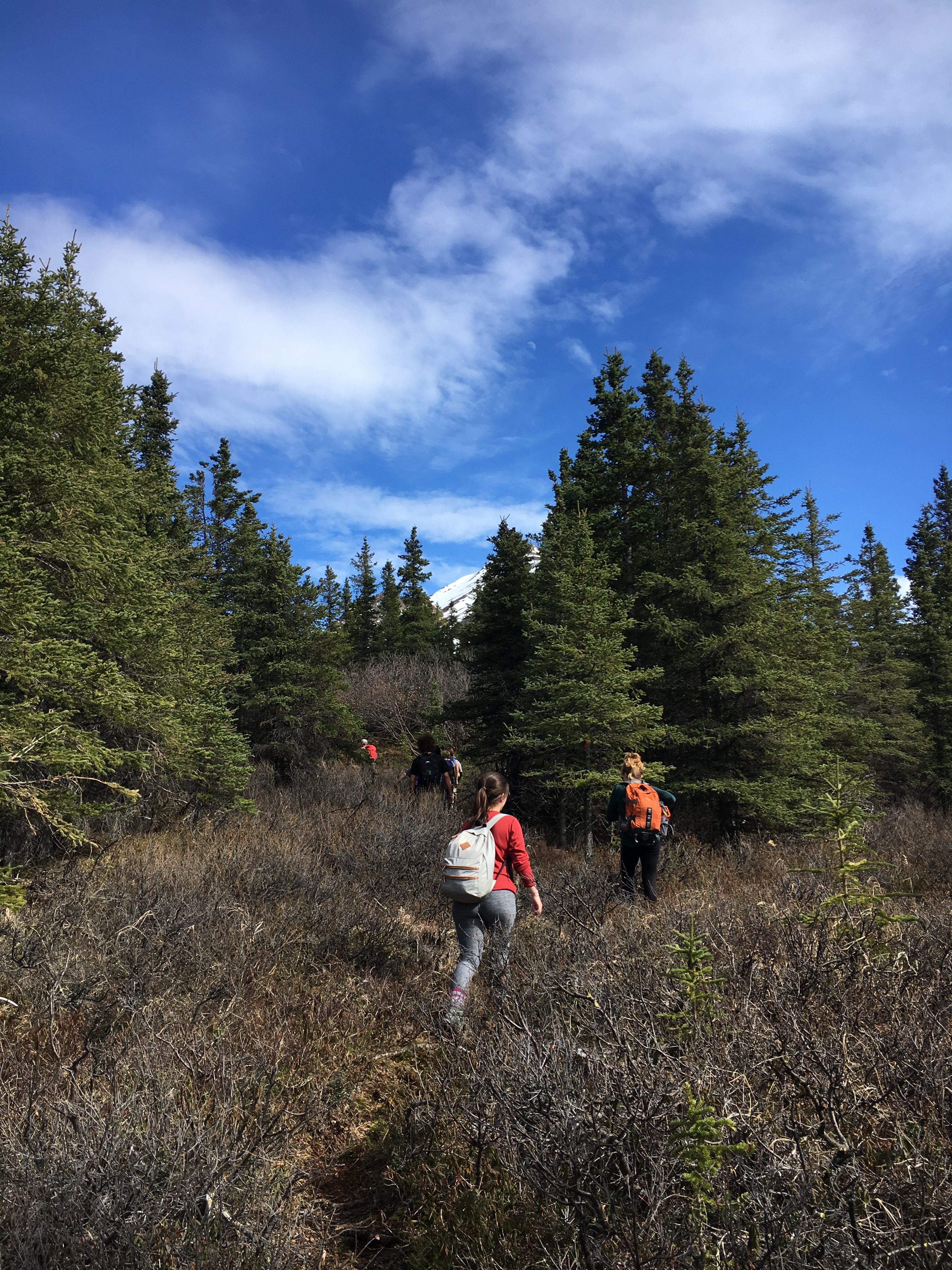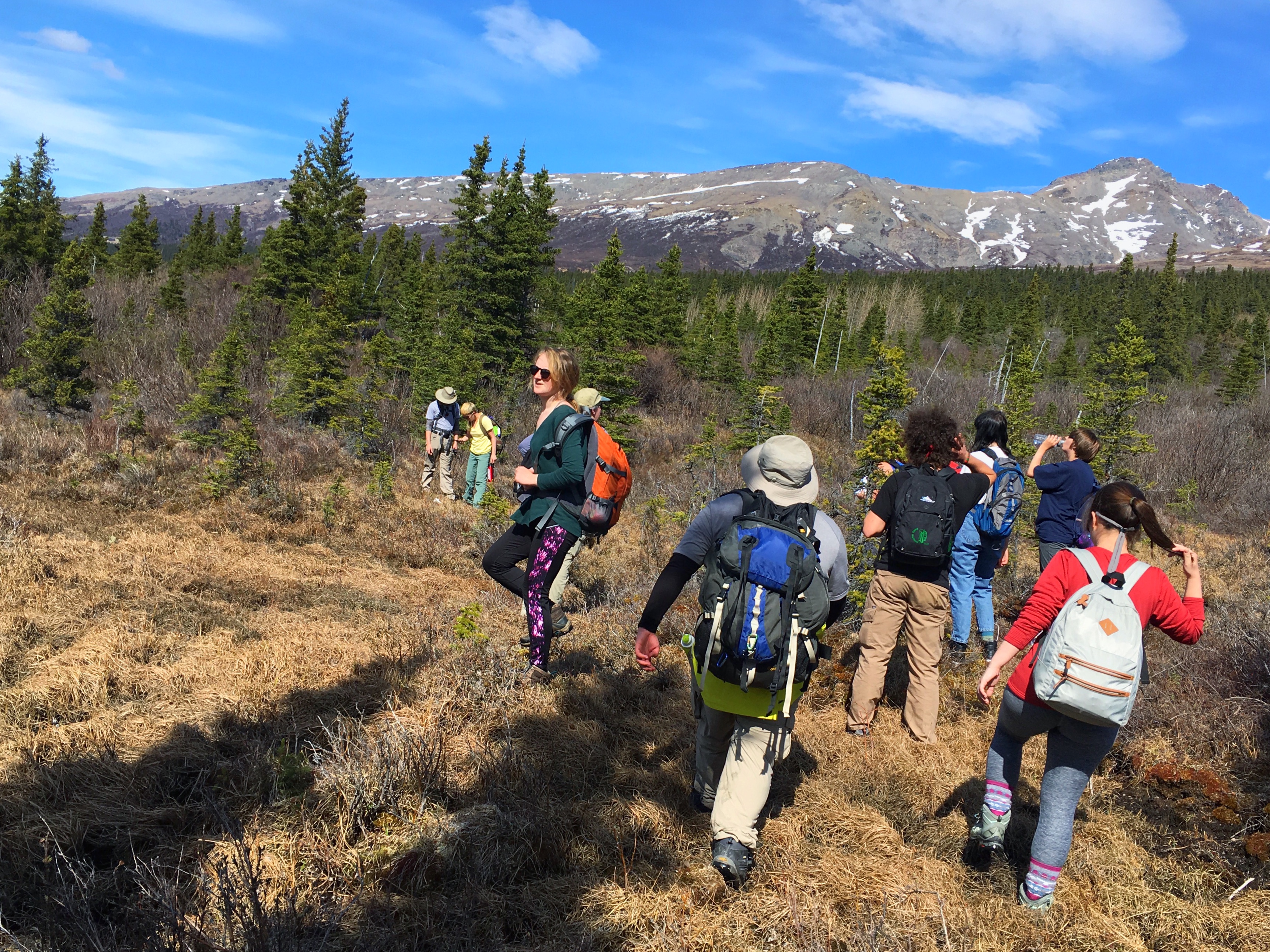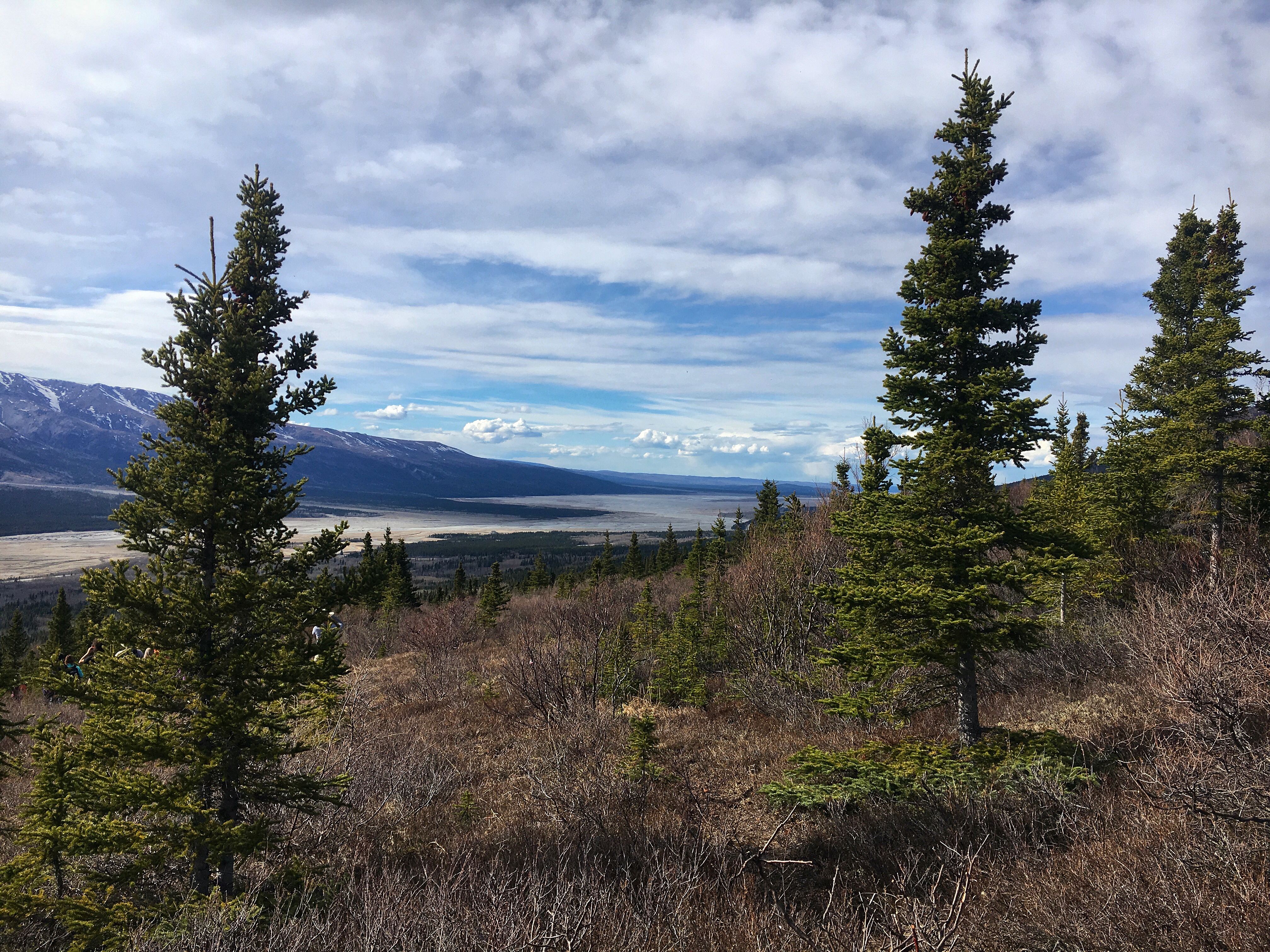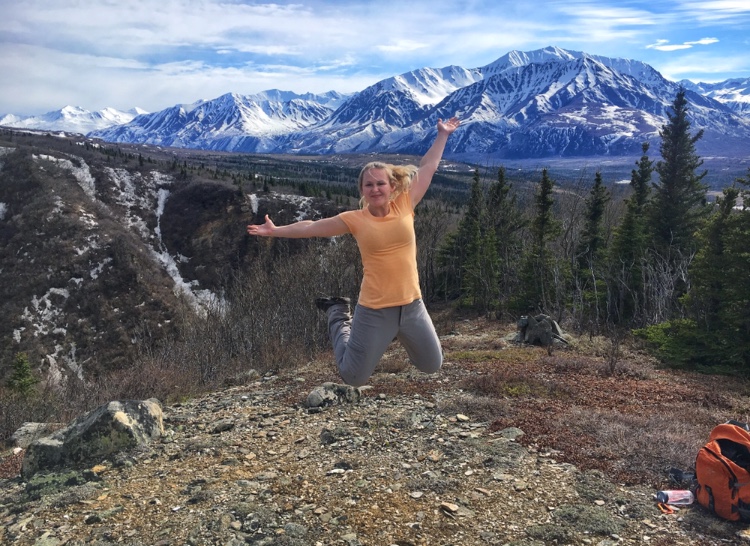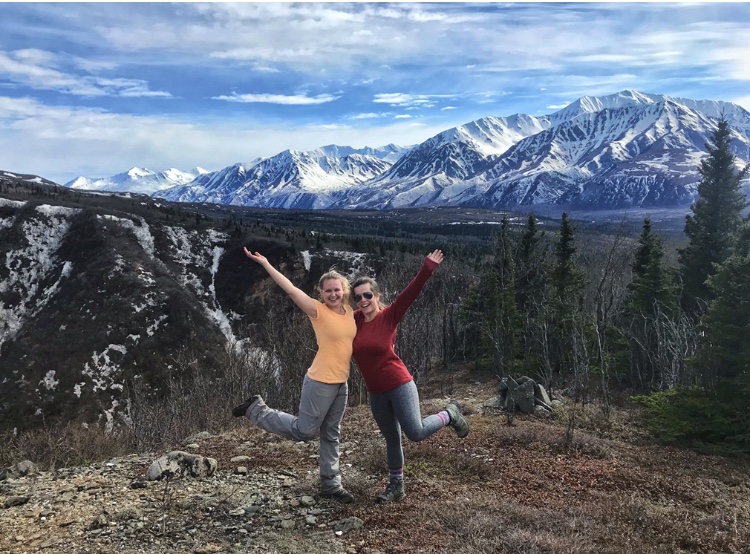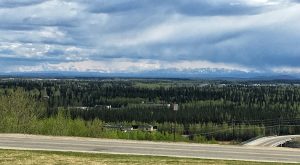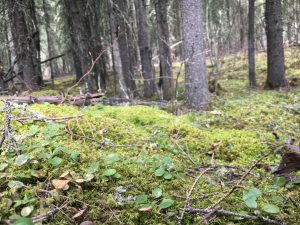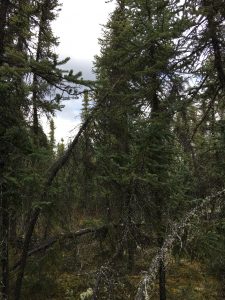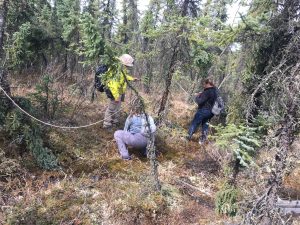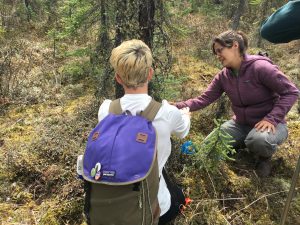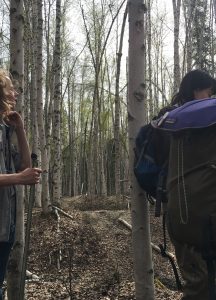It was a beautiful Monday morning, May 21st, the first part of that day we spent hiking along the river to the pretty waterfall that was up in the mountains. It was a pretty challenging walk because the trail was right through the river so rocks were pretty slippery; I fell and filled my shoes with water twice, and ice sheets that were left from winter could not have been really trusted (p.s. never try to impress others by amazing hiking skills as it most likely will not go well haha). However, all of this was worth it as a hike was pretty adventurous, we were surrounded by lovely views and a really nice weather and some surprises, such as a hare’s skull that I was able to find right next to the trail.
After the really nice but challenging walk our group got back into the lodge we stayed in. We were almost exhausted, however, some of us still could not stay inside and really wanted to explore the area of the Black Rapids at that awesome nice sunny day. Our amazing charming hosts Annie told us that there was a gorgeous path that began right behind her lodge. She said that it was a way to the top of the mountain with gorgeous views of valleys, mountain ranges, and even a glacier. The glacier became shorter in the last thirty years Annie was a resident here, but still can be seen with binoculars. However, she said if we decide to go up we should never look back until we rich a top… later we understood why. The strongest maybe even the craziest people of the group, proudly can say I am one of those people, have decided to go and see how awesome the view actually was. We began our new hiking adventure with the same trail as before, however, turned earlier into the deep forests. The first part of the way was hard with a really uphill slope, so many of us ran out of breath pretty quickly. Although the path became easier later, knew struggles began as we lost the trail and were not sure where to go. Few people got initiative to go and find the path through woods but they got back pretty quickly as it was really hard to go through boreal fulfilled with pine and spruces trees woods. We had to come back to the place where we were sure the trial was right. Some of us already thought that we have got lost and would have to come back to the lodge without seeing pretty views.
After some time we finally found the way up, Hooray! Continuing to go up, we did what Annie told us and did not look back. After approximately 50 minutes of going up we saw that the highest point was very close and we became motivated and recharged again. And few minutes later we were there at the SUMMIT! I do not have enough and right words to describe a view opened to us from the top – it was breathtaking!!! Annie was right that the view to overlook the area would be the best from here. All of us took lots of pictures. After celebrating our achievement to get to the place we hardly can imagine down in valley, we rewarded ourselves with some snacks, when we have realized that it was time to go back.
It was a beautiful hike with some challenges but with unforgettable emotions and pictures that will remind me of the amazing time I had in Alaska. I am very glad that I took this course and was able to see amazing flora and fauna of the “last frontier” and met and spent time with really cool people. I want to thank Dr. Jackson and Dr. Anderson for organizing this great trip. I appreciate all their help, advises and knowledge that they shared with me and other people of our group.

